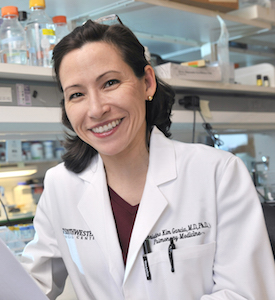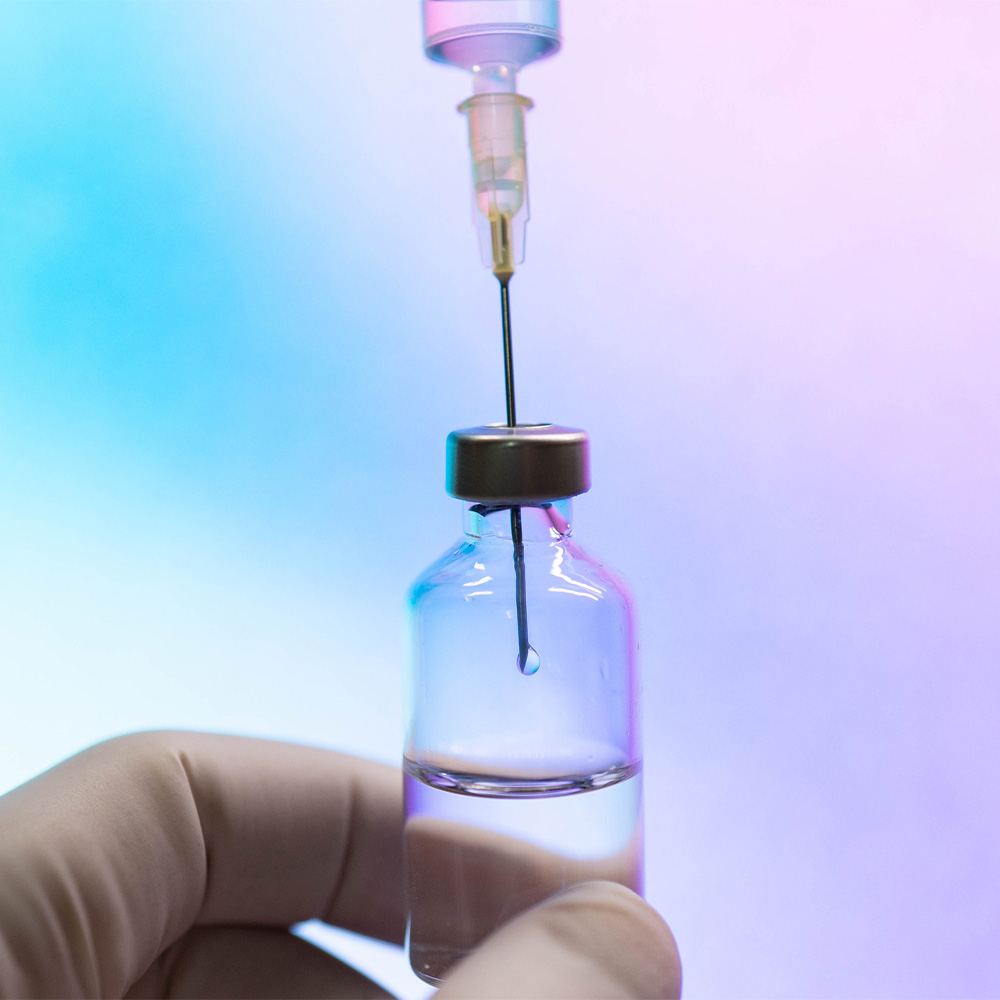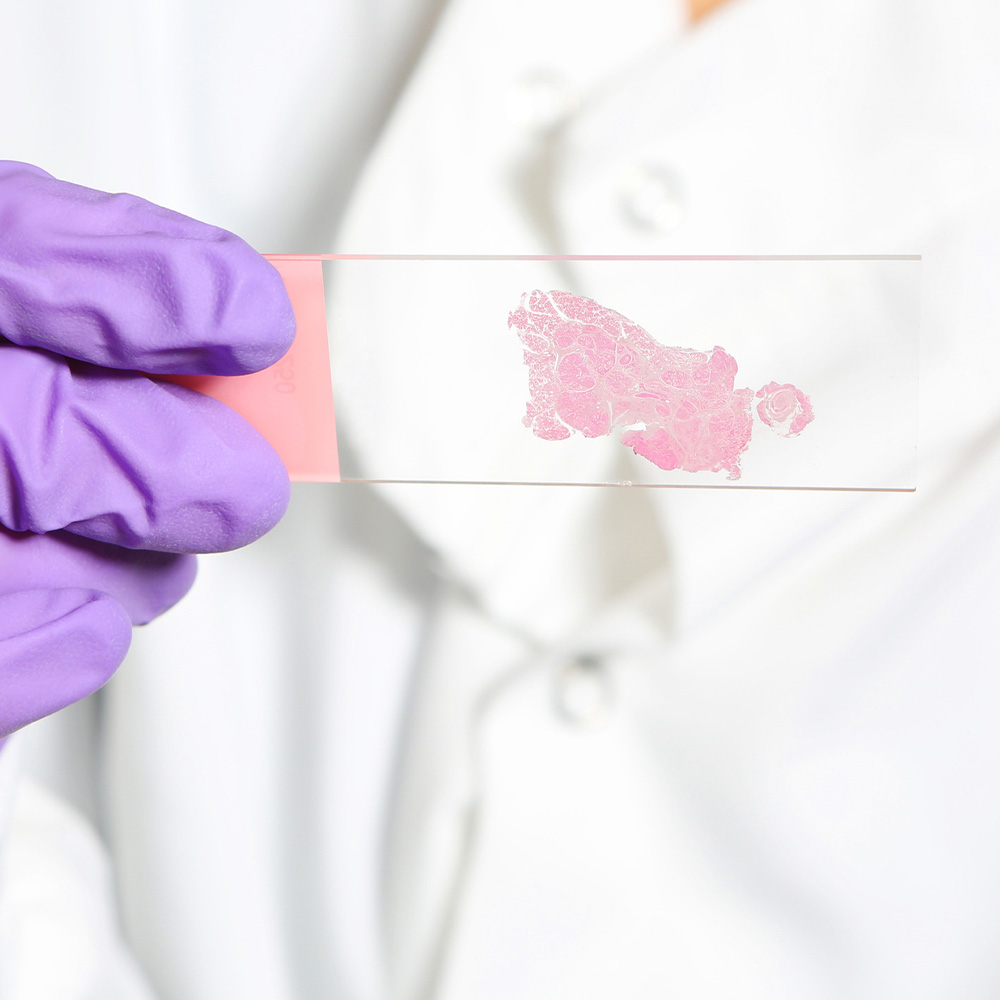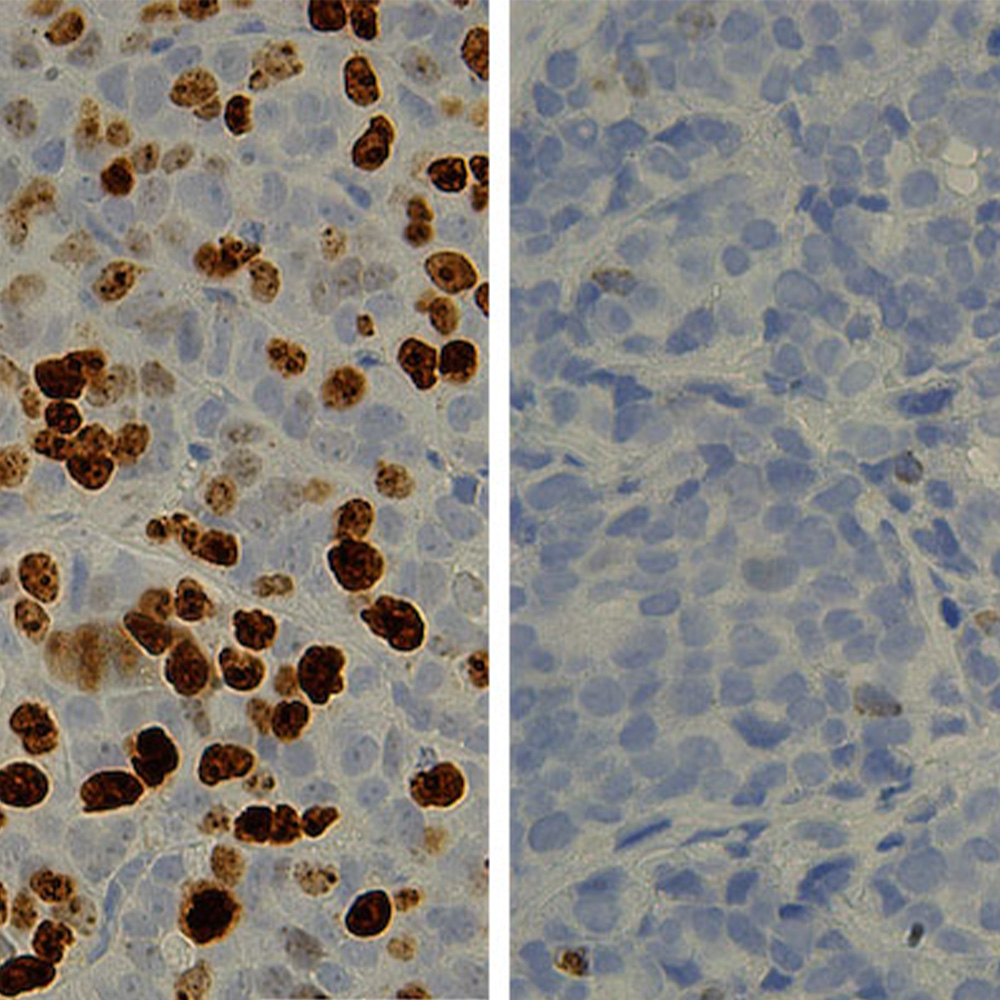Mutations in telomerase promoter counteract loss-of-function mutations

DALLAS – April 7, 2017 – A study by UT Southwestern Medical Center scientists describes noncoding mutations in regulatory DNA sequences that protect against the adverse effects of pulmonary fibrosis, a lung disease.
Studying the genetic basis of pulmonary fibrosis, researchers with the Eugene McDermott Center for Human Growth and Development found that some inherited mutations that lead to shortening of the protective ends of chromosomes are sometimes counterbalanced by other mutations that enhance the length of these chromosome ends.
Authors Dr. Christine Garcia, Professor with the McDermott Center and of Internal Medicine, Dr. Richard Wang, Assistant Professor of Dermatology, and colleagues say the findings could have implications for a number of diseases, including premature-aging conditions and cancer.
The research appears in the Journal of Clinical Investigation.
Below, Dr. Garcia, who holds the Kern and Marnie Wildenthal President’s Research Council Professorship in Medical Science, explains the findings and their significance.
What did you find?
Telomeres are repetitive structures of DNA and proteins that protect the ends of our chromosomes. Some individuals have mutations in the proteins that maintain these structures, and these individuals can develop pulmonary fibrosis, skin abnormalities, bone marrow failure, or other symptoms of premature aging. We found that the blood of a subset of these “premature aging” patients spontaneously developed “rescuing” mutations in the promoter of a gene that normally lengthens telomeres. A promoter is a segment of DNA that regulates the expression of a gene.
Why is that important?
Most spontaneously occurring mutations occur within the protein-coding region of the genes. This study describes noncoding mutations that occur to mitigate the effects of a genetic disease.
What are the implications of your findings for these diseases?
The same hyper-activating mutations that we identified have been found frequently in cancers. Because all of the individuals we studied have no signs of cancer, our results suggest that these mutations alone are not enough to drive the development of cancer.
How will this research help patients?
Therapies are currently being tested that increase the activity of telomerase, an enzyme that encourages formation of telomeres, to treat patients with short telomere diseases. Additional studies are needed to determine whether rescuing or activating telomerase will be safe and effective over extended periods of time. Our findings suggest that activating telomerase may in fact be safe.
How does/will this study help other researchers/physicians in the field?
Because the mutations were also found preferentially in certain types of blood cells, these studies may also shed light on how different types of blood cells grow and develop.
What cautions should be considered in interpreting the results?
Only a small number of patients possessed the rescuing mutations. The mutations were only identified in a subset of tissues identified.




